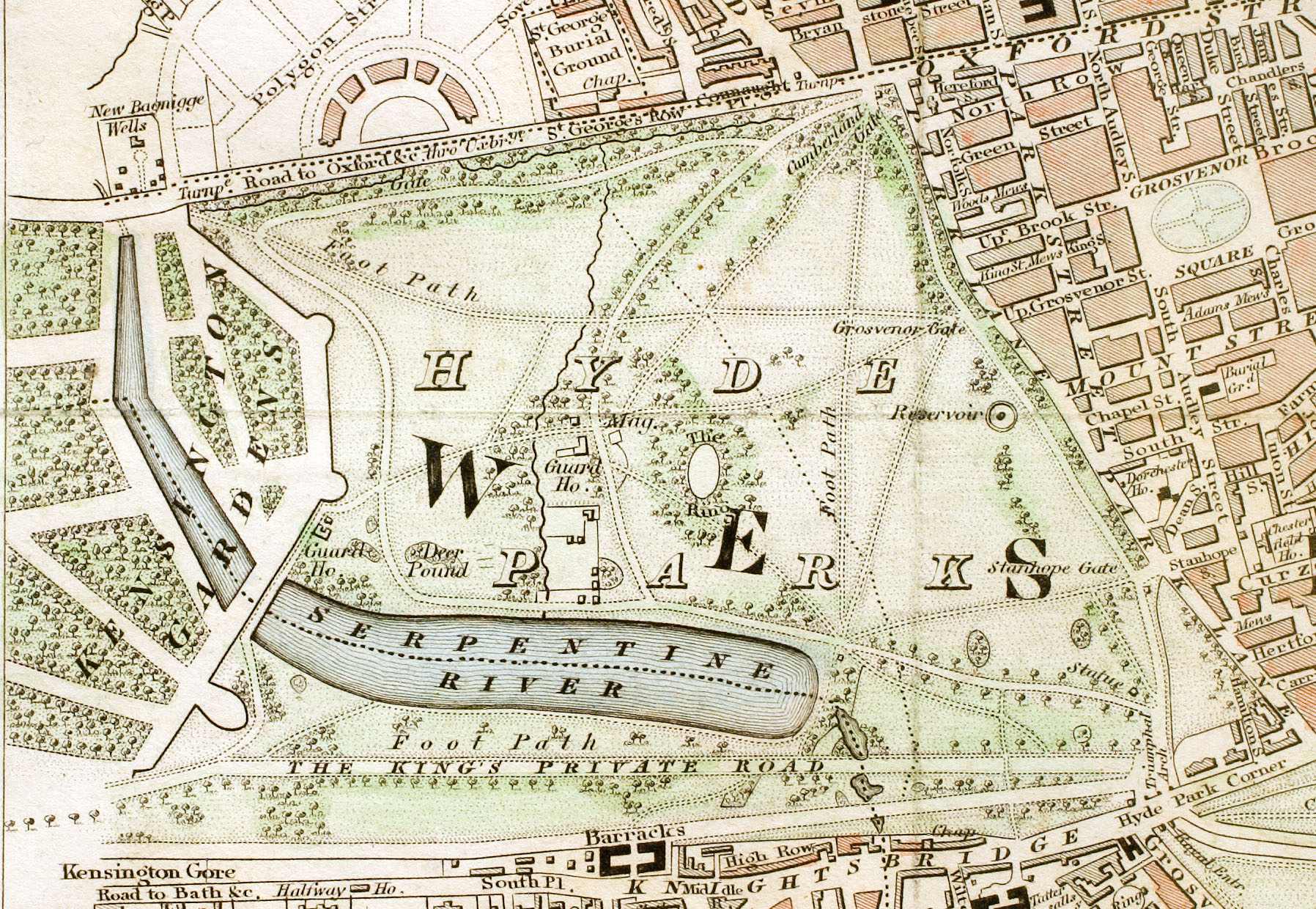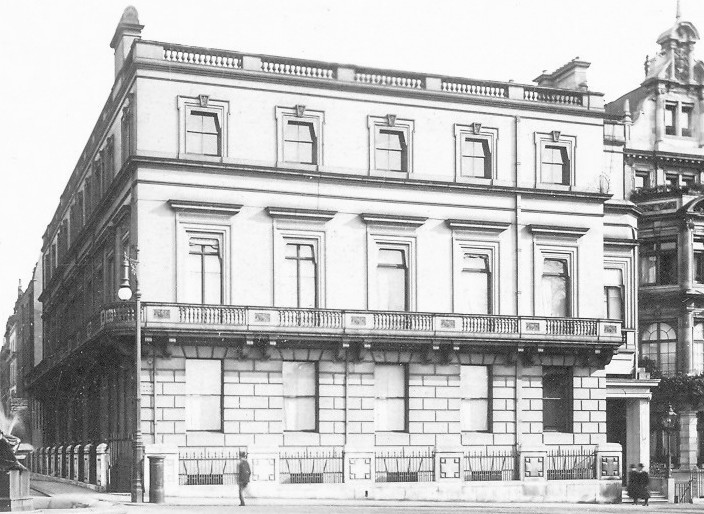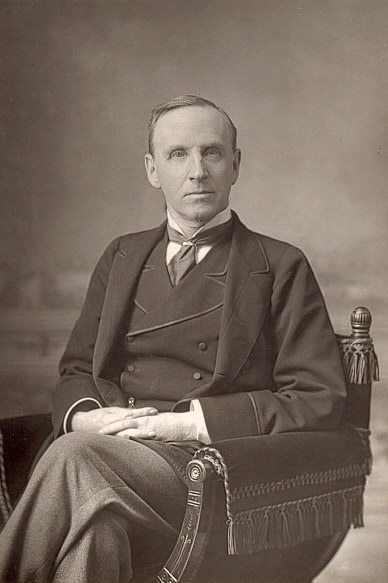|
Robert Ellison (British Army Officer)
Colonel Robert Ellison (17903 July 1843) was a British Army officer who fought in the Peninsular War and at the 1815 Battle of Waterloo. Life The second son of Henry Ellison, of Hebburn, County Durham, and Henrietta, daughter of John Isaacson, he joined the 1st Regiment of Foot Guards as an ensign by purchase on 17December 1807. He became a lieutenant and captain on 20December 1812 then saw service at Cádiz, Spain in 1811 and during the Peninsular War from 1812 to 1814. During the Waterloo Campaign he fought at Quatre Bras and Waterloo, for which he was promoted Brevet Major. At the latter battle he fought with the light companies at Hougoumont where "on one occasion, when he was forced to retreat from the orchard to the chateau, he would have been bayoneted by the French, had not the men, with whom he was a great favourite, charged back, and saved his life. After Waterloo he was at the taking of Péronne on 26June 1815. Subsequently, he became a lieutenant-colonel on 15April ... [...More Info...] [...Related Items...] OR: [Wikipedia] [Google] [Baidu] |
Hyde Park, London
Hyde Park is a , historic Listed building#Heritage protection, Grade I-listed urban park in Westminster, Greater London. A Royal Parks of London, Royal Park, it is the largest of the parks and green spaces that form a chain from Kensington Palace through Kensington Gardens and Hyde Park, via Hyde Park Corner and Green Park, past Buckingham Palace to St James's Park. Hyde Park is divided by the Serpentine and the Long Water lakes. The park was established by Henry VIII in 1536 when he took the land from Westminster Abbey and used it as a hunting ground. It opened to the public in 1637 and quickly became popular, particularly for May Day parades. Major improvements occurred in the early 18th century under the direction of Caroline of Ansbach, Queen Caroline. The park also became a place for duels during this time, often involving members of the nobility. In the 19th century, the Great Exhibition of 1851 was held in the park, for which The Crystal Palace, designed by Joseph Paxt ... [...More Info...] [...Related Items...] OR: [Wikipedia] [Google] [Baidu] |
Henry Robinson-Montagu, 6th Baron Rokeby
General Henry Robinson-Montague, 6th Baron Rokeby (2 February 1798 – 25 May 1883) was a senior British Army officer of the 19th century. Military career Born the son of the 4th Baron, Rokeby was commissioned into the 3rd Foot Guards in 1814. He fought at the Battle of Quatre Bras and the Battle of Waterloo in June 1815. He fought in the Crimean War as Commander of the 1st Division in 1855. After the war, in 1856, he was appointed to the new post of major-general commanding the Brigade of Guards. He retired from the post five years later in 1861. He was promoted to general in 1869 and retired in 1877. The peerage became extinct on his death on 25 May 1883. He lived at Hazelwood, Abbots Langley, Hertfordshire from 1838 until his death. Family In 1826 he married Magdalen Huxley or Hurley, the widow of Frederick Crofts. Their children included: *Hon. Harriet Lydia Montagu, (d. 23 November 1894), she married the 4th Earl of Portarlington; *Hon. Mary Montagu, (d. 6 Septembe ... [...More Info...] [...Related Items...] OR: [Wikipedia] [Google] [Baidu] |
British Army Personnel Of The Napoleonic Wars
British may refer to: Peoples, culture, and language * British people, nationals or natives of the United Kingdom, British Overseas Territories and Crown Dependencies. * British national identity, the characteristics of British people and culture * British English, the English language as spoken and written in United Kingdom of Great Britain and Northern Ireland and, more broadly, throughout the British Isles * Celtic Britons, an ancient ethno-linguistic group * Brittonic languages, a branch of the Insular Celtic language family (formerly called British) ** Common Brittonic, an ancient language Other uses *People or things associated with: ** Great Britain, an island ** British Isles, an island group ** United Kingdom, a sovereign state ** British Empire, a historical global colonial empire ** Kingdom of Great Britain (1707–1800) ** United Kingdom of Great Britain and Ireland (1801–1922) * British Raj, colonial India under the British Empire * British Hong Kong, colonial ... [...More Info...] [...Related Items...] OR: [Wikipedia] [Google] [Baidu] |
1843 Deaths
Events January–March * January 3 – The '' Illustrated Treatise on the Maritime Kingdoms'' (海國圖志, ''Hǎiguó Túzhì'') compiled by Wei Yuan and others, the first significant Chinese work on the West, is published in China. * January 6 – Antarctic explorer James Clark Ross discovers Snow Hill Island. * January 20 – Honório Hermeto Carneiro Leão, Marquis of Paraná is appointed by the Emperor, Dom Pedro, as the leader of the Brazilian Council of Ministers, although the office of Prime Minister of Brazil will not be officially created until 1847. * January ** Serial publication of Charles Dickens's novel ''Martin Chuzzlewit'' begins in London; in the July chapters, he lands his hero in the United States. ** Edgar Allan Poe's short story " The Tell-Tale Heart" is published in ''The Pioneer'', a Boston magazine. ** The Quaker magazine '' The Friend'' is first published in London. * February 3 – Uruguayan Civil War: Argentina supports Oribe of Uruguay, an ... [...More Info...] [...Related Items...] OR: [Wikipedia] [Google] [Baidu] |
1790s Births
Year 179 ( CLXXIX) was a common year starting on Thursday of the Julian calendar. At the time, it was known as the Year of the Consulship of Aurelius and Veru (or, less frequently, year 932 ''Ab urbe condita''). The denomination 179 for this year has been used since the early medieval period, when the Anno Domini calendar era became the prevalent method in Europe for naming years. Events By place Roman empire * The Roman fort Castra Regina ("fortress by the Regen river") is built at Regensburg, on the right bank of the Danube in Germany. * Roman legionaries of Legio II ''Adiutrix'' engrave on the rock of the Trenčín Castle (Slovakia) the name of the town ''Laugaritio'', marking the northernmost point of Roman presence in that part of Europe. * Marcus Aurelius drives the Marcomanni over the Danube and reinforces the border. To repopulate and rebuild a devastated Pannonia, Rome allows the first German colonists to enter territory controlled by the Roman Empire. Asia * ... [...More Info...] [...Related Items...] OR: [Wikipedia] [Google] [Baidu] |
British Newspaper Archive
The British Newspaper Archive website provides access to searchable digitized archives of British and Irish newspapers. It was launched in November 2011. History The British Library's Newspapers section was based in Colindale in north London until 2013, and is now divided between the St Pancras and Boston Spa sites. The library has an almost complete collection of British and Irish newspapers since 1840. This is partly because of the legal deposit legislation of 1869, which required newspapers to supply a copy of each edition of a newspaper to the library. London editions of national daily and Sunday newspapers are complete back to 1801. In total, the collection consists of 660,000 bound volumes and 370,000 reels of microfilm containing tens of millions of newspapers with 52,000 titles on 45 km of shelves. After the closure of Colindale in November 2013, access to the 750 million original printed pages was maintained via an automated and climate-controlled storage fac ... [...More Info...] [...Related Items...] OR: [Wikipedia] [Google] [Baidu] |
The Morning Chronicle
''The Morning Chronicle'' was a newspaper founded in 1769 in London. It was notable for having been the first steady employer of essayist William Hazlitt as a political reporter and the first steady employer of Charles Dickens as a journalist. It was the first newspaper to employ a salaried woman journalist, Eliza Lynn Linton; for publishing the articles by Henry Mayhew that were collected and published in book format in 1851 as '' London Labour and the London Poor''; and for publishing other major writers, such as John Stuart Mill. The newspaper published under various owners until 1862, when its publication was suspended, with two subsequent attempts at continued publication. From 28 June 1769 to March 1789 it was published under the name ''The Morning Chronicle, and London Advertiser''. From 1789 to its final publication in 1865, it was published under the name ''The Morning Chronicle''. Founding The ''Morning Chronicle and London Advertiser'' was founded in 1769 by Willia ... [...More Info...] [...Related Items...] OR: [Wikipedia] [Google] [Baidu] |
Inquests In England And Wales
Inquests in England and Wales are held into sudden or unexplained deaths and also into the circumstances of and discovery of a certain class of valuable artefacts known as "treasure trove". In England and Wales, inquests are the responsibility of a coroner, who operates under the jurisdiction of the Coroners and Justice Act 2009. In some circumstances where an inquest cannot view or hear all the evidence, it may be suspended and a public inquiry held with the consent of the Home Secretary. Where an inquest is needed There is a general duty upon every person to report a death to the coroner if an inquest is likely to be required. However, this duty is largely unenforceable in practice and the duty falls on the responsible registrar. The registrar must report a death where: *The deceased was not attended by a doctor during their last illness *The death occurred within 24 hours of admission to a hospital *The cause of death has not been certified by a doctor who saw the deceased afte ... [...More Info...] [...Related Items...] OR: [Wikipedia] [Google] [Baidu] |
Park Lane
Park Lane is a dual carriageway road in the City of Westminster in Central London. It is part of the London Inner Ring Road and runs from Hyde Park Corner in the south to Marble Arch in the north. It separates Hyde Park, London, Hyde Park to the west from Mayfair to the east. The road has a number of historically important properties and hotels and has been one of the most sought after streets in London, despite being a major traffic thoroughfare. The road was originally a simple country lane on the boundary of Hyde Park, separated by a brick wall. Aristocratic properties appeared during the late 18th century, including Breadalbane House, Somerset House, Park Lane, Somerset House, and Londonderry House. The road grew in popularity during the 19th century after improvements to Hyde Park Corner and more affordable views of the park, which attracted the nouveau riche to the street and led to it becoming one of the most fashionable roads to live on in London. Notable residents in ... [...More Info...] [...Related Items...] OR: [Wikipedia] [Google] [Baidu] |
Colours, Standards And Guidons
In military organizations, the practice of carrying colours, standards, flags, or guidons, both to act as a rallying point for troops and to mark the location of the commander, is thought to have originated in Ancient Egypt some 5,000 years ago. The Roman Empire also made battle Vexillum, standards reading SPQR a part of their vast armies. It was formalized in the armies of Europe in the High Middle Ages, with standards being emblazoned with the commander's coat of arms. General use Military colours originally had a practical use in battle. As armies became trained and adopted set formations, each regiment's ability to keep its formation was potentially critical to its success, and therefore its entire army's success. In the chaos of battle, due to the amount of dust and smoke on a battlefield, soldiers needed to be able to determine where their regiment was. Regimental flags are generally awarded to a regiment by a head of state during a ceremony. They were therefore t ... [...More Info...] [...Related Items...] OR: [Wikipedia] [Google] [Baidu] |
Newcastle Upon Tyne (UK Parliament Constituency)
Newcastle-upon-Tyne was a borough constituency, parliamentary borough in the county of Northumberland of the House of Commons of England from 1283 to 1706, then of the House of Commons of Great Britain from 1707 to 1800 and of the House of Commons of the United Kingdom from 1801 to 1918. It returned two Member of Parliament (United Kingdom), Members of Parliament (MPs), elected by the Plurality-at-large voting, bloc vote system. Newcastle first sent Members to Parliament in 1283, although it was not always possible to act upon the writ of summons, which was disregarded on at least four occasions (1315, 1327, 1332 and 1337) because of warfare with the Scots. The constituency was abolished in 1918, being split into four divisions; Newcastle upon Tyne Central (UK Parliament constituency), Newcastle-upon-Tyne Central, Newcastle upon Tyne East (UK Parliament constituency), Newcastle-upon-Tyne East, Newcastle upon Tyne North (UK Parliament constituency), Newcastle-upon-Tyne North and N ... [...More Info...] [...Related Items...] OR: [Wikipedia] [Google] [Baidu] |




